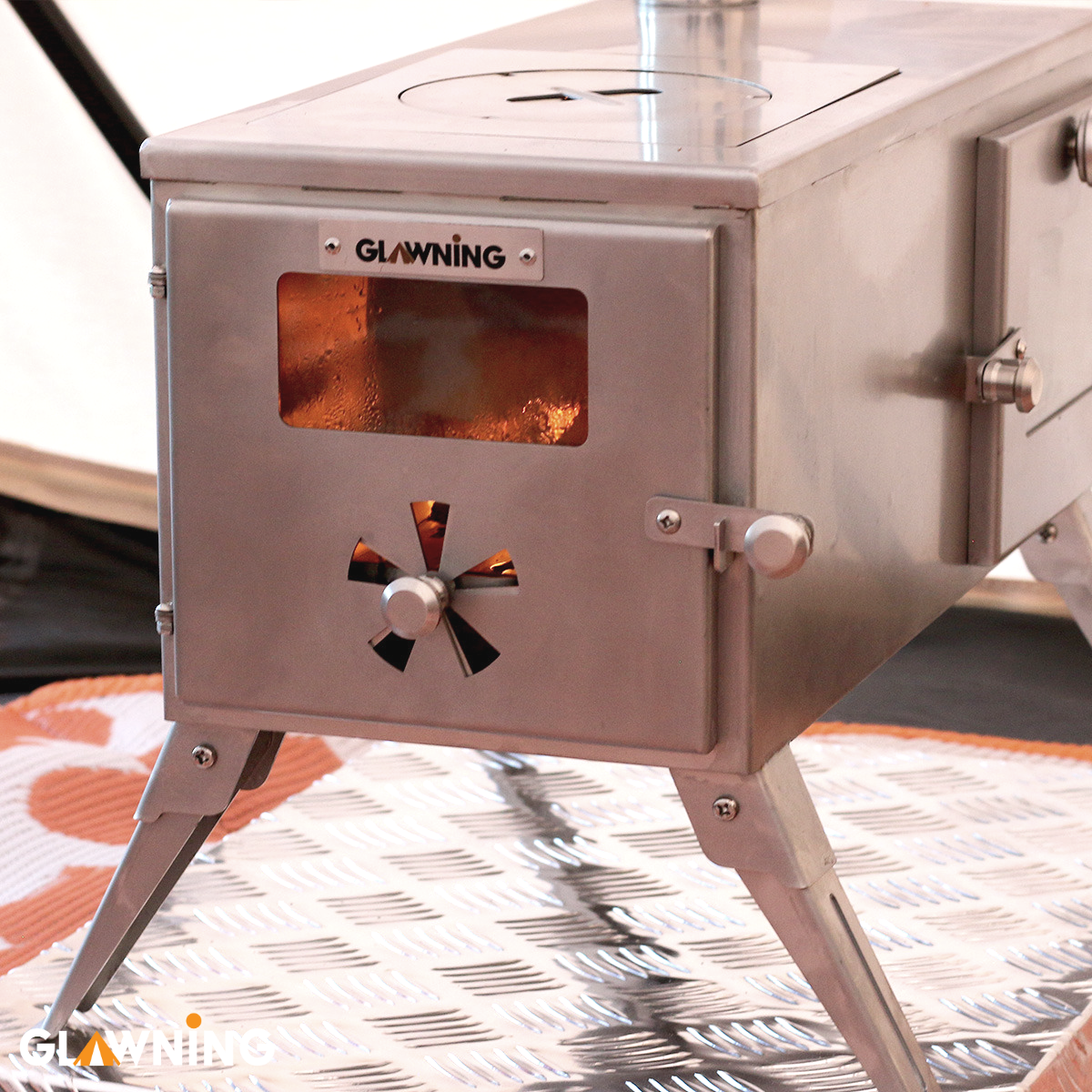Glawning Stove Safety: Your Ultimate Guide to Safe and Cosy Camping

Camping with a Glawning stove can be one of the most rewarding experiences—a warm, glowing fire on a chilly evening is hard to beat! To make sure your stove is always a source of comfort and never a cause for worry, here are some key safety tips to help you use your Glawning stove effectively and get the most out of your camping experience.
Essential Items for Stove Safety
Before you light that first match, make sure you have the following essentials packed:
-
Fire Gloves: Protect your hands while adding logs or adjusting the stove. You can go for something fancy like these gloves from Robens or keep it simple with oven mitts. If you ever need to move the stove or adjust the flue while it’s hot, you’ll be glad you have this essential item.
-
Fire Blanket: A must-have in case of emergencies, to quickly smother any unwanted flames.
-
Stove Stand: Elevate your stove to create an air gap for heat, ensure stability, and avoid potential hazards.
-
Carbon Monoxide Detector: Always bring a carbon monoxide detector to monitor air quality. Safety first!
-
Kindling and Logs: Use kiln-dried hardwood logs—they burn more efficiently with less smoke. Don’t use treated wood, bits of old pallets, or scraps from DIY projects. The wrong fuel can create sparks or produce tar that can build up and run down the outside of your flue.
-
Axe or Log Splitter: For splitting logs into the perfect size for your stove.
These items are essential for keeping you safe, comfortable, and well-prepared for your camping adventure.
Lighting Your Glawning Stove
Lighting your stove is a bit of an art, but with the right technique, you’ll have a cosy fire going in no time.
-
Burn Off Stove Paint: On your first use, it’s important to burn off the stove paint. Light a small fire and let it burn for a while. This will help cure the paint and prevent any fumes later on. It might smell a bit funny and look smoky, but this is normal. After about an hour, it’ll stop, and you’re good to go.
-
Lighting the Fire: Start with a firelighter and some dry kindling. Stack it loosely in the stove and light it with matches or a lighter, keeping the air vent fully open. Once the kindling is burning well, gradually add small logs until you have a steady flame.
-
Control the Air: Camping stoves are not as easy to fine-tune as home wood burners. It’s usually best to keep the air vent fully open to prevent the fire from smoldering.
Caring for Your Stove
With a little regular maintenance, your stove will stay in great condition for years to come.
-
Cleaning the Flue: Over time, the flue can get clogged, affecting airflow. Use a simple toilet brush to clean it out occasionally—it works surprisingly well!
-
Repainting the Stove: After a few adventures, your stove might look a little worn. A spray can of heat-resistant stove paint is an easy way to give it a fresh coat.
-
Cleaning the Glass: The stove’s glass door can get sooty. Once it’s cool, wipe it down with a damp cloth, baby wipes, or even newspaper dipped in stove ash. This will keep your view of the fire clear and bright.
Using the Stove Safely in Poor Weather
Bad weather doesn’t have to ruin your cozy camping experience. Here are some tips to use your stove safely when the wind picks up.
-
Pegging the Stove: Roll back a section of the tent groundsheet and peg the stove securely to the ground to prevent tipping or movement.
-
Jubilee Clips on the Flue: Fix jubilee clips on the flue sections to prevent them from pulling apart in high winds. This extra step ensures safe operation.
-
Guy Rope for Stability: Tie a guy rope to the top of the chimney to stabilize it in windy conditions. This helps prevent excessive movement that could cause damage or safety risks.
Final Thoughts
Using a Glawning stove can turn any camping trip into a luxurious, warm, and memorable experience. By following these tips, you’ll stay safe, cosy, and keep your stove in top shape for many adventures to come.
Happy camping, and stay safe out there!







Leave a comment